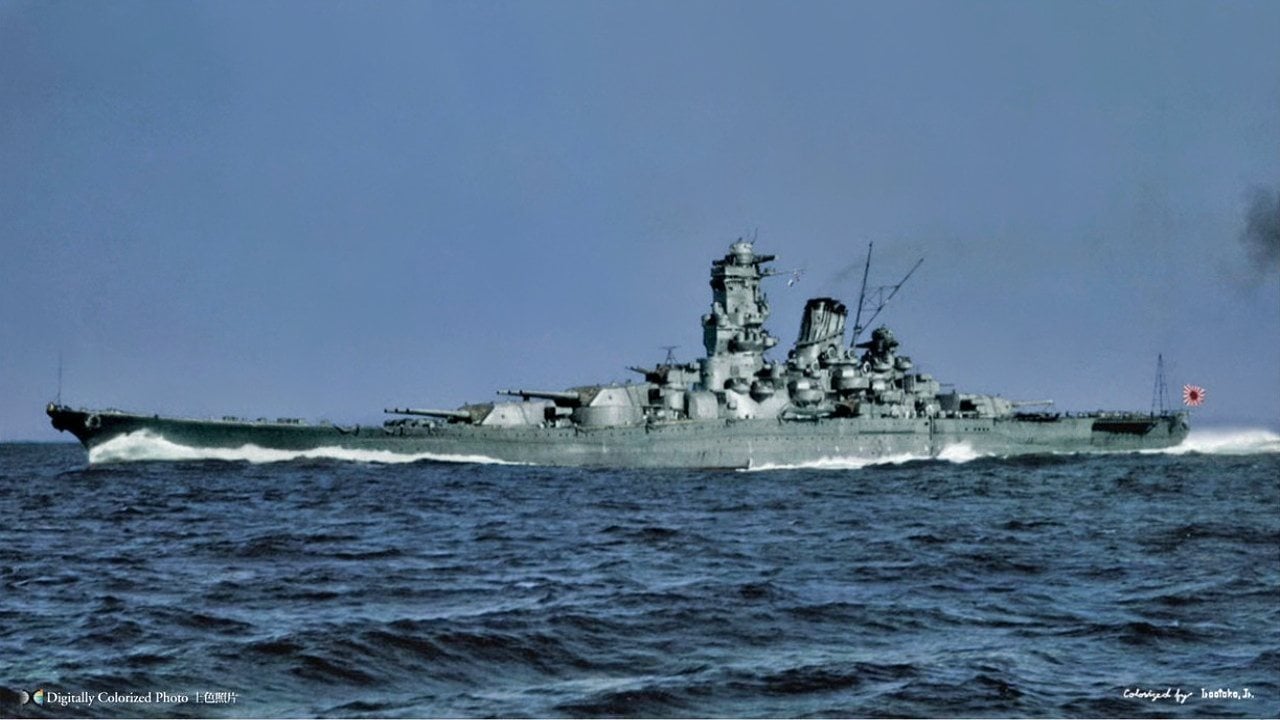
The Imperial Japanese Navy’s Yamato and her sister ship Musashi were the largest battleships ever constructed. In fact, some say this was the worst of all the battleships.
The Imperial Japanese Navy’s Yamato, along with her sister ship Musashi, were the largest battleships ever constructed. Her nine 46cm (18.1-inch) Type 94 main guns employed were the largest ever mounted on a battle wagon, and as a result, she was the most powerfully armed battleship ever constructed. Displacing nearly 72,000 tonnes at full load, she was simply massive.
Construction on the warship also was attended by great secrecy, which included the erection of high fences, protective roofing, and even camouflage netting. The United States Navy had no idea what they would face as the clouds of war appeared on the horizon. Yamato had been the pride of the Imperial Japanese Navy and it was from the bridge of the battleship in 1942 that Admiral Isoroku Yamamoto directed the fleet during the Battle of Midway.
It would be easy to suggest that Yamato was among the very best battleships ever constructed, but that is far from the case. In fact, Yamato is also hands-down the absolute worst battleship ever built.
That is because warships need to be judged on what they did in service, not what they could have done. She only directly engaged Allied warships on a single occasion, during the Battle off Samar – part of the larger Battle of Leyte Gulf – where she fired at several U.S. Navy warships.
Yamato sank just one American Casablanca-class escort carrier, the USS Gambier Bay (CVE-73), the only American carrier sunk by enemy surface gunfire during World War II; and reportedly one destroyer.
It was a poor display of the capabilities of such an overhyped warship.
Complex Construction
Japanese naval military doctrine still believed that victory in a war would require being able to “out-gun” and “out-fight” its adversary, and it was expected that no ship could match the firepower and broadside weight of the Yamato-class. Yet, the massive guns had an unusually complex construction, which perhaps reflected the difficulty in manufacturing such a large caliber.
As was seen when the warship actually went into combat, the large guns weren’t actually decisive weapons that could smash an enemy fleet. It also meant that Yamato and her sister ship needed to be supplied with specialized ammunition that wasn’t employed by the IJN’s other warships. Then there was the enormous cost of the warship.
The IJN bet big on the potential of its super battleships, even as it was developing the carrier-based tactics that would result at the end of the battleship era. Tokyo would have been better served by building two additional carriers rather than Yamato.
Battleship Yamato: Failure to Engage
Yamato‘s poor service history is also due to the fact that the IJN was also reluctant to hazard Yamato without air cover, which limited how the vessels could be used. That also explains why the third vessel of the class was converted to a carrier while still under construction.
Simply put, Yamato was built for an age that was largely already over.
In fact, it was only in early 1945, when Japan’s leaders realized they were fighting a losing war that Yamato took to the ocean for the final time, a one-way mission to Okinawa. Her orders were to beach the warship in defense of the island.
The mighty battleship never made it and instead was sunk by American carrier-based bombers and torpedo bombers on April 7, 1945, with most of her crew.

A total of 19 American aerial torpedoes struck the ship, and in total 3,055 sailors died on her, the highest toll of sailors ever killed on a single warship.
Proud Legacy for This Battleship?
Almost ironically, despite having such a poor combat record, Yamato has become a symbol of pride and fascination to the Japanese people.
The warship has been the subject of movies and TV shows – including a science-fiction series that first debuted in the 1970s and which focused on the vessel being transformed into a massive starship. Only finally did Yamato truly prove herself in battle against alien invaders threatening Earth.





